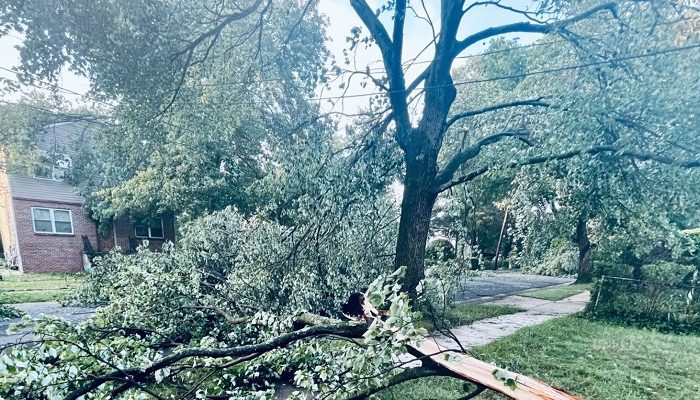There are many things that those with landscaping can control to look after their garden. They can choose how often to have garden maintenance, when the lawn is going to be mowed, what to feed the plants, and what irrigation system is to be used. Conversely, there are some things that a homeowner has no control over, and one of those is the weather.
Hopefully, for most of you reading this, the weather where you live is conducive to landscaping and everything within its design thriving. That will mainly be down to the many hours of sunshine it receives, provided that you have taken steps to ensure it receives enough water whether from a watering can, a hose, or a fully functioning irrigation system.
We also assume that, if you have many hours of sunshine, you are not too often blighted by long spells of rain or even snow in the winter months, and therefore do not have to worry about flooding or frost adversely affecting the plants in your garden.
What no one can be sure of though is that they will not have to endure a storm. Storms are extremely rare in some areas, however, when they do occur they can cause havoc and, worse than that, they can be destructive. That destruction can mean overnight your landscaping can go from being an idyllic haven to something resembling a scene from an apocalyptic movie.
Even moderate storms can cause a fair degree of damage and upheaval in a landscaped garden which will leave you many things that you have to put right. Read on and we will outline seven of our favourite professional restoration tips for fixing up landscape gardens after they have suffered storm damage.
Restoration Tip #1 – Assess The Damage First: Before you go rushing around your garden to start the clearing up, you should first take time to check around your garden to assess what damage has been done. This is especially important as some damage might be out of sight due to debris that is hiding it, and the underlying damage could be dangerous. At this stage also make a list of what needs to be removed and replaced due to being damaged beyond repair.
Restoration Tip #2 – Eliminate Dangers First: The priority after you assess the damage in your landscaped garden after a storm is to eliminate dangers, both to yourself and to others who might walk into or by your garden. This means removing broken branches especially if they overhang another property or the public area beyond your garden. Also, take care with electrical items which have been damaged and ensure you turn the power to them off before repairing them.
Restoration Tip #3 – Clear Blocked Drainage Systems: A storm will create lots of small items of debris including leaves, twigs, and small branches. What can happen is these accumulate at and in drainage systems and the worst case is they can cause flooding which is exacerbated by the rainfall that occurred during the storm. As a priority, you should clear these blockages by removing the debris which has created them.
Restoration Tip #4 – Remove Larger Debris Carefully: The violence of a storm means that large items within your garden are at as much risk as smaller items. If you come across damaged items that are large then take care when removing them. Ideally, get someone else to help you, and if debris needs to be moved somewhere else, use a wheelbarrow rather than carrying it.
Restoration Tip #5 – Trim Back Damaged Plants And Trees: Once your garden is made safe and debris has been removed, you can start the job of making your landscaping look great again. The main way to do this is often by trimming back plants, hedges, shrubs, and smaller trees which have borne the brunt of the storm and been damaged as a result.
Restoration Tip #6 – Pressure Clean Hard/Flat Surfaces: A storm can churn up lots of dust and smaller particles which ultimately settle on hard, flat surfaces once the winds have subsided. The problem thereafter is that they make these surfaces look dirty and grubby, so you need to wash them using a pressure cleaner, with the caveat that you have unblocked any drains that needed to be so that the water does not accumulate.
Restoration Tip #7 – Call In The Professionals: This final tip should be your favourite one because following it means the only work you have to do is pick up the telephone and call in the professionals to do all the post-storm cleanup and restoration work for you.

